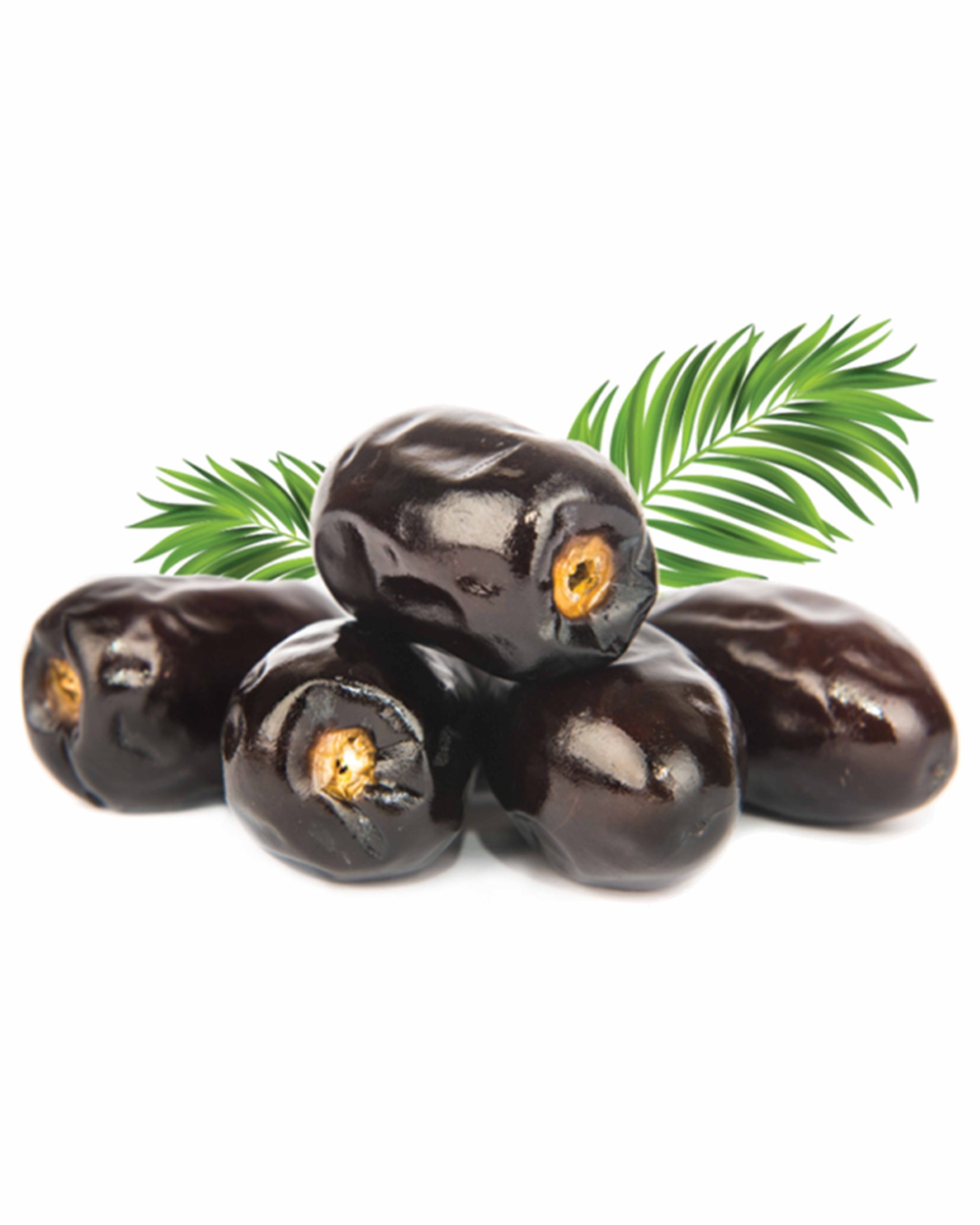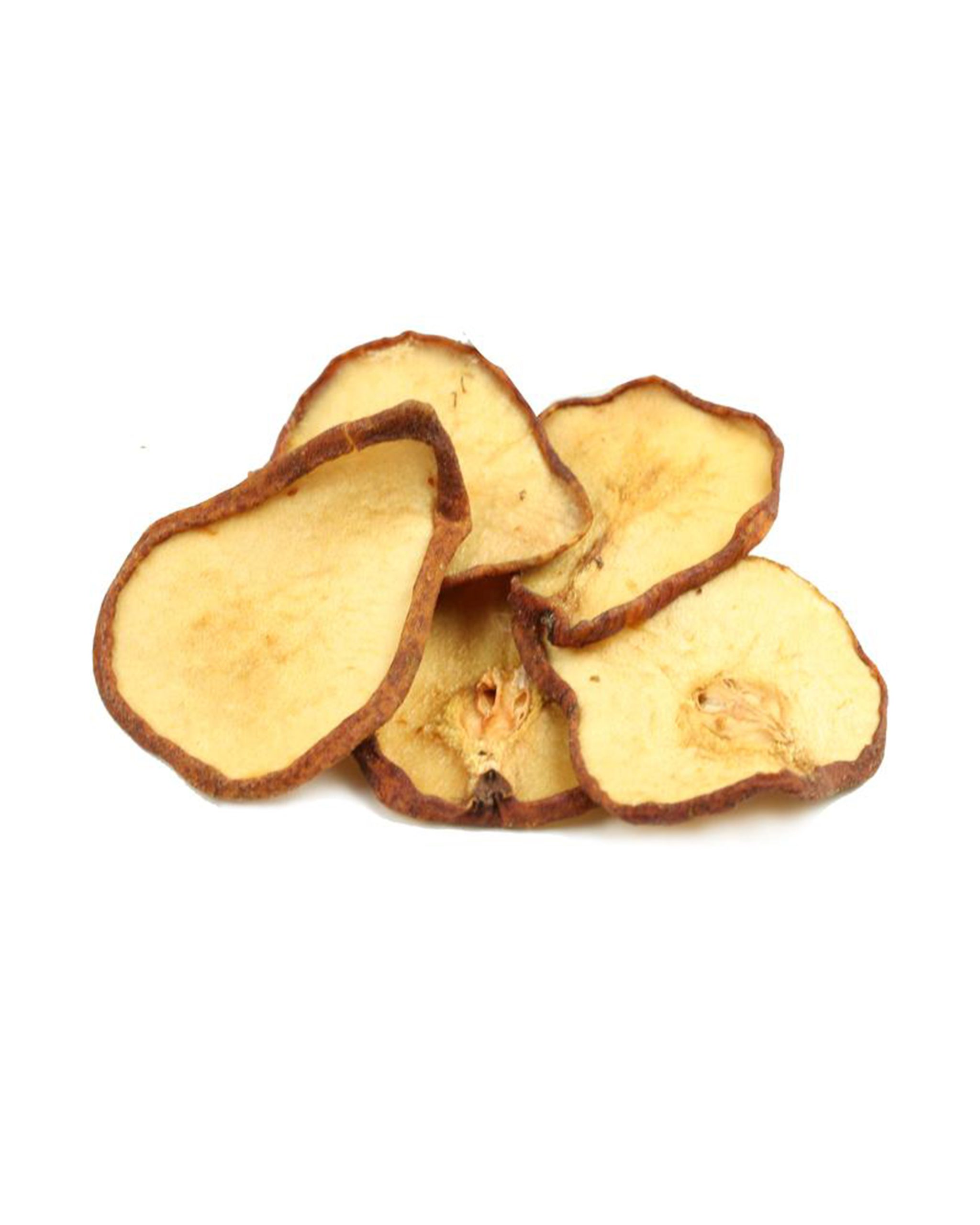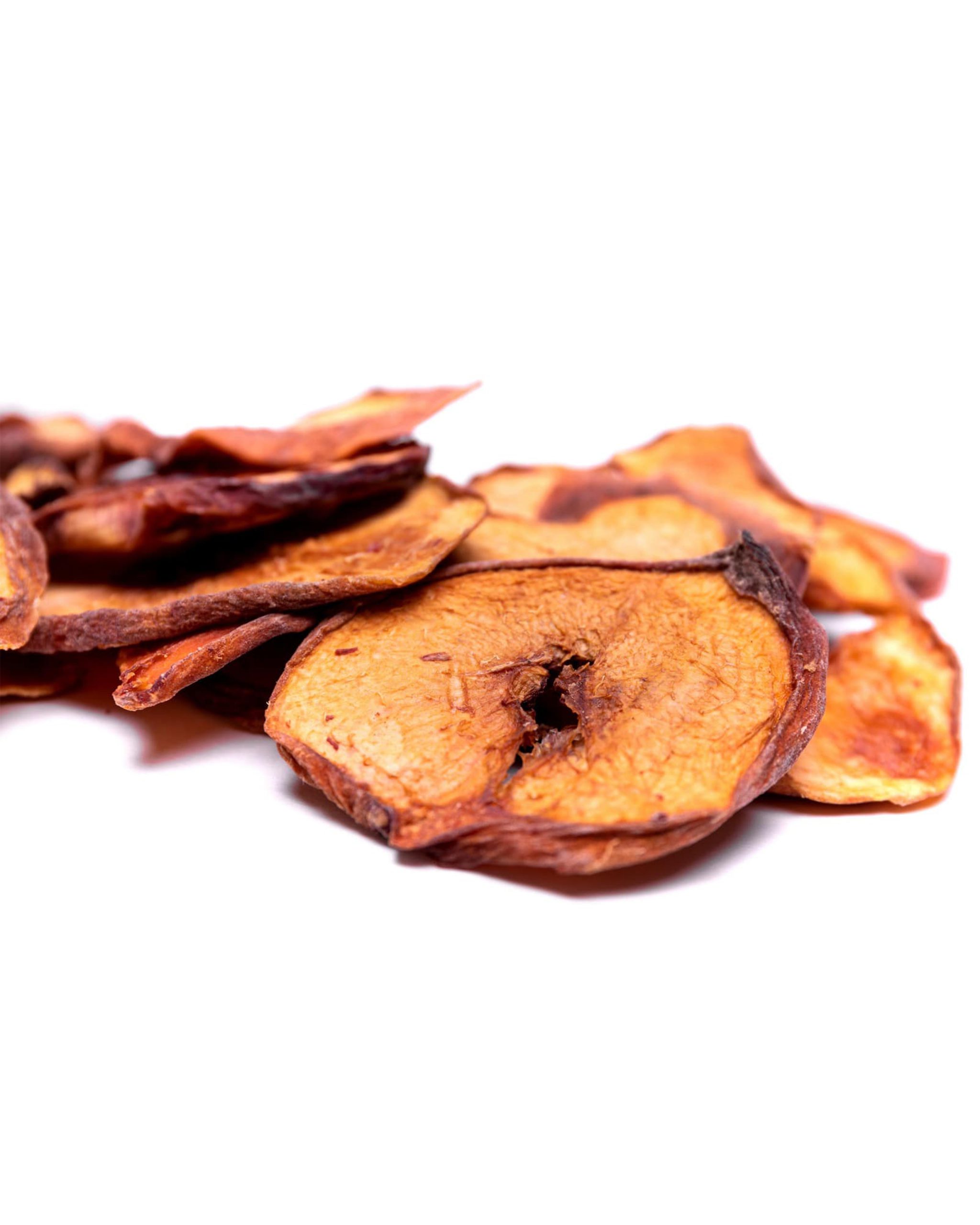Dates
The harvest is during September. Machines are used as much as possible fort he semi-dry variety „Deglet Nour”. Just the same a lot of manual labour is still necessary.
There are no standard procedures, so that each farmer does it in his own way. Totally by machines or to a large extent traditionally by hand picking.
In USA the farmers have hydraulic powered telescopic extension arms with attached baskets installed on trucks, so that the picker can be lifted to the height of the stands of fruit.
He takes the paper away, by a machete he cuts off the fruit stand’s stem and lets it drop to the bottom of the basket. In this way the fruit stands at the same height around the crown are quickly cut off, but a 2 − 3 x repositioning of the basket will be necessary. This is done by the driver of the truck, who has to cooperate very well with the picker.
After all fruit is harvested of the palm, the basket is let down and opened at its bottom, so that the contents can drop out.
By a different worker each single fruit stand is fastened to the gripping pliers of the shaking machine. The dates get loose and drop into a pallet box with a capacity of 300 kg, which will be filled by the yield of 2 palms.
A manual harvest, mainly in North Africa, is 4 x smaller. The picker climbs on a ladder to the crown of the palm, chains himself to the tree and then cuts off the stands of fruit. These stands of fruit are fixed to a hook of his belt´s cable winch and then are let down one by one. As many dates drop off, cloths are laid under the tree to catch the falling dates. Shaking of the fruit stands to separate the dates from the stems can also be done manually. The dates will keep for 12 months without any loss of quality when stored at refrigerator’s temperatures; deep frozen nearly for an unlimited time.
HISTORY AND SPREADING
As one of the oldest culture plants and most important oasis‘ tree of South Africa as well as of South West Asia, the date palm most likely originates from the Mediterranean regions around the Persian Gulf. It thrives with sufficient water and at average temperatures of 30 ° C.
It is said that the date palm was already known in India 8.000 years and in Egypt and Babylon 4.000 years ago. Main growing areas are nowadays in Saudi-Arabia, Egypt, Iraq, Iran, Algeria, Pakistan and Sudan, but also in Israel, California and Tunesia.
The date palm bears fruit from its 5th year and has the maximum yield during the 10th year.
Until the age of 50 years it grows annually 30 cm, after that the yearly growth is reduced to 15 cm. The palms can reach an age of more than 100 years, but then they will be far too tall to climb, as the longest ladders are only 18 m high. Date palms cannot be lopped, as only the tops grow new leaves, which can get a length of up to 6 m and die off after 3 − 7 years.
An average date palm in its best years bears abt. 100 kg dates coming from 10 − 20 stands of fruit.
There are abt. 300 different varieties of dates, which are categorized into soft, semi-dry and dry dates. Mainly the semi-dry dates are suitable for the export, the “Deglet Nour“ (Finger of Light) is the best known variety. Soft dates do not keep so long and can only be transported in refrigerated containers. The most famous soft kind is the “Medjoul“ date. The “Zahadi“ is the best known one of the dry dates.
Dried dates are staple food of the orient. In Europe they are used by the bakery- and confectionary industry. They are eaten raw as a healthy snack, but are also a favoured ingredient in salads, fruit mixtures, cereals and in ice cream. On account of its high nutrient value the date is favoured for “Instant Energy Bars“ as well as for desserts.
CULTIVATION
A very hot and dry climate is ideal for dates. During a whole year they only need 3 cubic meters of water and are very tolerant towards salt. The year´s cycle of the date palm begins in February, when the flexible inflorescences sprout at the top of the palm from the axilla of last year´s foilage.
The plant is dioecious, meaning male and female blossoms grow on different trees. Bees ignore the odourless blossoms without nectar. Therefore the pollination must be effected manually by transfering the pollen with a piece of cotton wool or by means of a bellow, to the female blossoms. A male tree supplies sufficient pollen for abt. 50 female palms. To get the pollen the ripe male inflorescences are cut off and shaken. The released pollen are then absorbed and lengthend with wheat flour.
During the course of the year it is necessary to reclimb the palms in order cut off the dead leaves below the crown. To work at the top of the palm, the long sharp thorns along the leaves‘ stems must be taken off. Finally each growing batch of dates must be fixed by metal clasps to the neighboring leaf´s stem and has to be protected by packing paper against rare rain having a disasterous effect just before the harvest. During the ripening process dates will start to ferment quickly and will be easily infested by mould fungus.
HARVEST
The harvest is during September. Machines are used as much as possible fort he semi-dry variety „Deglet Nour”. Just the same a lot of manual labour is still necessary.
There are no standard procedures, so that each farmer does it in his own way. Totally by machines or to a large extent traditionally by hand picking.
In USA the farmers have hydraulic powered telescopic extension arms with attached baskets installed on trucks, so that the picker can be lifted to the height of the stands of fruit.
He takes the paper away, by a machete he cuts off the fruit stand’s stem and lets it drop to the bottom of the basket. In this way the fruit stands at the same height around the crown are quickly cut off, but a 2 − 3 x repositioning of the basket will be necessary. This is done by the driver of the truck, who has to cooperate very well with the picker.
After all fruit is harvested of the palm, the basket is let down and opened at its bottom, so that the contents can drop out.
By a different worker each single fruit stand is fastened to the gripping pliers of the shaking machine. The dates get loose and drop into a pallet box with a capacity of 300 kg, which will be filled by the yield of 2 palms.
A manual harvest, mainly in North Africa, is 4 x smaller. The picker climbs on a ladder to the crown of the palm, chains himself to the tree and then cuts off the stands of fruit. These stands of fruit are fixed to a hook of his belt´s cable winch and then are let down one by one. As many dates drop off, cloths are laid under the tree to catch the falling dates. Shaking of the fruit stands to separate the dates from the stems can also be done manually. The dates will keep for 12 months without any loss of quality when stored at refrigerator’s temperatures; deep frozen nearly for an unlimited time.
PROCESSING
Dates are sold either in bulk or in retail packages of 200 g − 1 kg.
The bulk dates are either packed, pitted or unpitted. into cartons of 10 − 23 kg.
The dates in retail packages are always unpitted (with stone).
After the primary processing shortly after picking, the dates are treated quite differently depending on whether they are to be sold in bulk or in retail packages.
After harvesting the dates are cleaned by brushing and spraying with water, conditioned to a homogeneous moisture level, in dry or damp premises. The dates are then assorted to the required size by a system of rotating cylinders with varying spaces and then they are sorted manually according to colour and look. These dates are now ready for packing into cartons. In case pitted merchandise is required, the vertically placed dates on looped metal sheets will be heated by steam.. Rows of steal studs then press the stone out of each date.
As a pitted date loses its shape and good look, dates in retail packages are never pitted. To give the dates a better appearance, they are covered with glucose. The dates are more shiny, firmer and have a fresher look. After the quality of the dates became more and more inferior during the last years, the treatment with glucose has to fulfill another function.
Dried dates of inferior qualilty, e.g. Tunesian variety Khouat Alligh, lose through movement during the transport the outer skin, resulting in an unappetizing look. The layer of glucose protects and prevents the outer skin peeling off during transport.
There are two methods for a glucose treatment. Either the dates are dipped into a solution of glucose or are sprayed with steam containing glucose. The glucose treatment was developed in Marseille at the end of last century. Marseille became therefore the stronghold of date packers. During the recent years this method was copied more and more by the factories in the producing countries. Marseille lost its important role.
The retail packages have various shapes and net weights. The most popular are the 200 g ones, which are called barquettes or raviers. The barquette is a small box, most of the times with an inspection window, in which the dates are loosely filled. A ravier is a longish shaped dish, in which the dates are neatly placed by hand, in two rows side by side. Between the 2 rows is a small fork as decoration, but also for picking up the date for eating.
NUTRITION FACTS
Nutritive value per 100g dried dates:
| Calories | 276 kcal (1.174 kJ) |
| Fat | 0,53 g |
| Protein | 1,85 g |
| Carbohydrates | 65 g |
| Mineral nutrients | 1,8 g |
| Vitamins | 0,2 mg |
GRADING
A grading in the usual sense is unknown. As there are so many different kind of dates, a difference is mainly made between the varieties. Each variety has its own specific characteristics.
As already mentioned at the beginning, the dates can be divided into 3 categories:
Dry: (moisture content abt. 10 %) e.g. Zahadi
Semi-dry: (moisture content 10 − 15 %) e.g. Deglet Nour, Sayer
Soft: (moisture content 15 − 20 %) e.g. Medjoul or Masafati
The Tunesians categorize within each variety also in respect of the percentage of impurities, damages or infestation. A date of categorie 1 is much less infested than of categorie 2.
In Iran the dates are also partly assorted according to size. The Sayer variety has to be especially mentioned here, which is mainly used for industrial purpose.
The Iranian Sayer date is assorted according to size and cleanliness.
While the size can easily by ascertained by the number of fruit per kg, the cleanliness differs from region to region. It can be said that the size of the date is of the same proportion as the cleanliness. Therefore the big select dates are very clean and nearly „free flowing“ and the FAQ dates have a high percentage of impurities and are sticky.
| Select Grade A | abt. 160 dates per kg |
| Select Grade B | abt. 190 dates per kg |
| GAQ (Good average Quality) | abt. 220 dates per kg |
| FAQ (Fair average Quality) | abt. 260 dates per kg |
The Sayer dates are sorted according to their number per kg. The assortment is done before pitting. The ascertained size is also used for the pitted dates, although in fact there will be a higher number of dates per kg. (An unpitted date weighs on an average 4,75 g, a pitted date weighs abt. 4,0 g).






Reviews
There are no reviews yet.